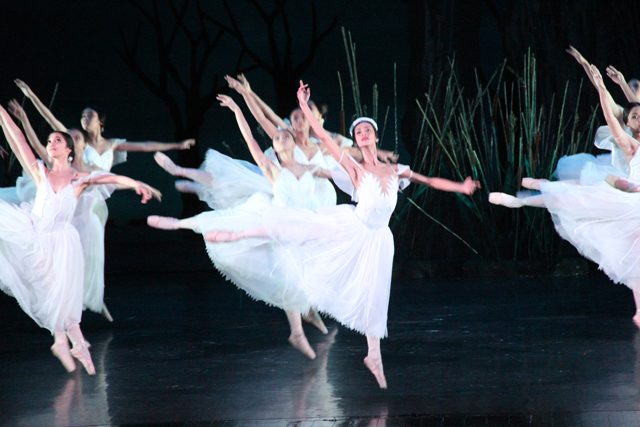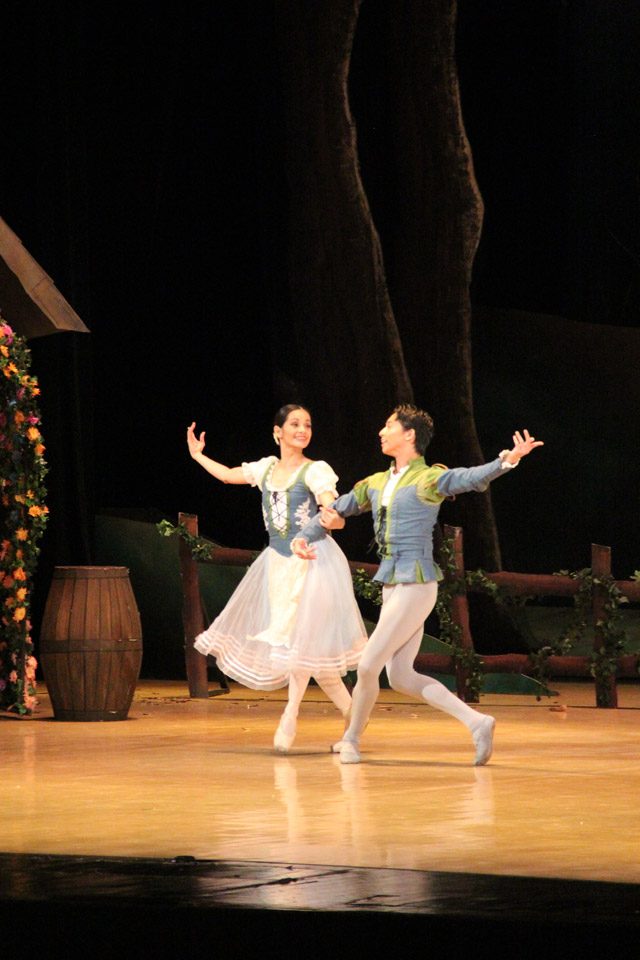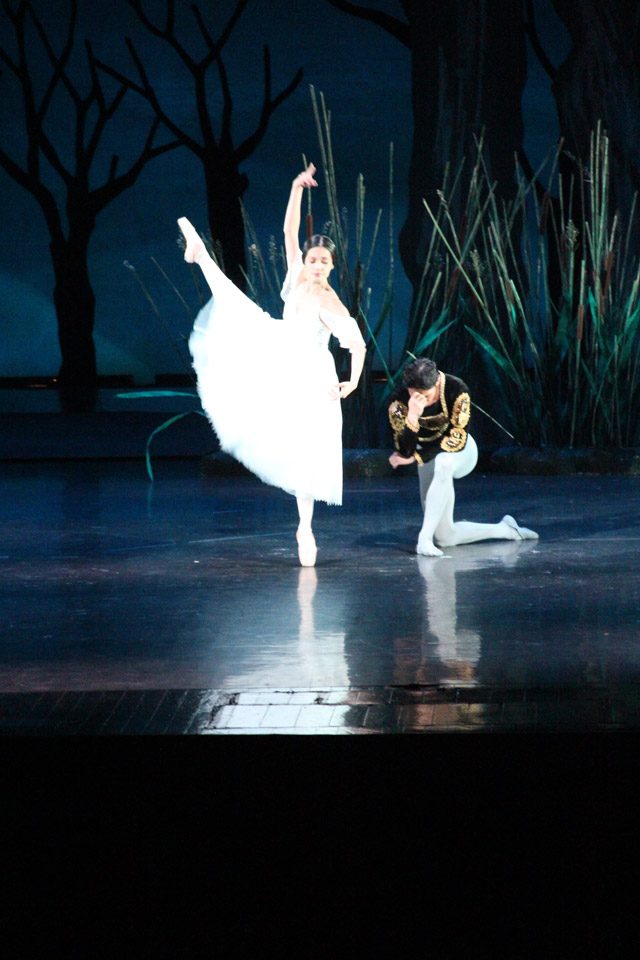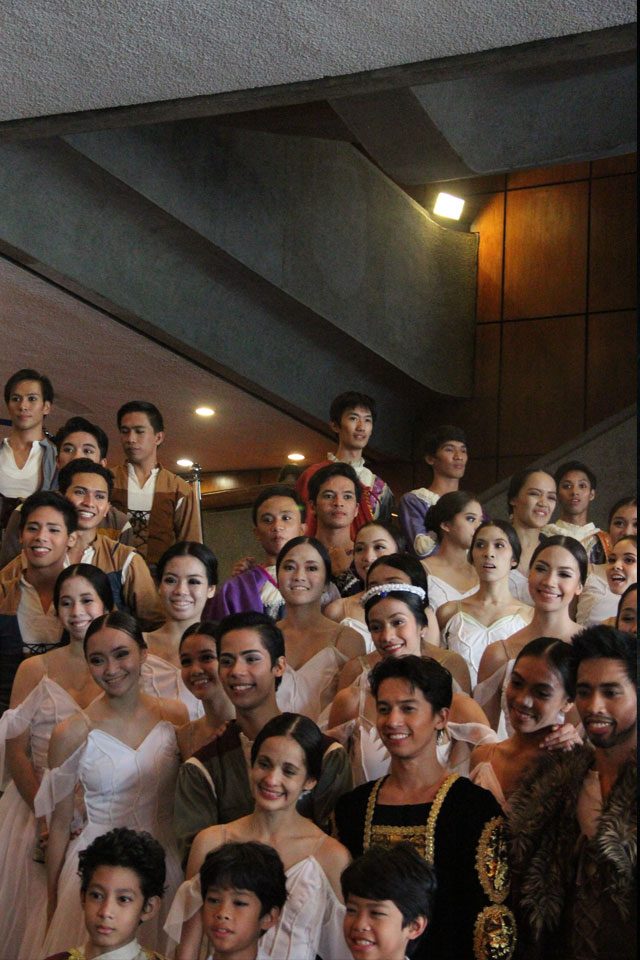SUMMARY
This is AI generated summarization, which may have errors. For context, always refer to the full article.

A young girl falls for a man who doesn’t tell her that he is betrothed to another. A love built upon a lie spans the chasm between aristocracy and peasantry. A maddening heartache unhinges a lady’s sanity. A ghostly romance leads to forgiveness and redemption from the afterlife. Love eternal awaits, even for the one who hurts a woman the most.
All this and more is Giselle, the quintessential romantic ballet, where sweet music resonates in the heart and becomes the anthem to liaisons and love lives. Feminine and graceful dance defies gravity and mortality.
Recently, for its sapphire season, as part of its Blue Moon Series, Ballet Philippines once again staged at the Cultural Center of the Philippines the romantic ballet Giselle – the seventh time in its 45-year history since it first performed the piece in August 1979 for its 10th anniversary.
Simply put, Giselle is a favorite of Filipino ballet lovers. Like a paramour they can’t stop loving, audiences keep coming back for more.
Timeless tale
SPOILER ALERT: If you don’t want to know the ending, skip to “True Romance” below.
Gisselle, a timeless and as refined as it is, is also very Pinoy, having possibly influenced many of today’s most popular archetypical narratives: A romance that can never be between rich and poor, a la the telenovela Ikaw Lamang.

A girl driven to insanity by grief much like Noli Me Tangere’s Sisa. And there’s a self-sacrificing heroine who loves despite deceit and abandonment like the stereotypical martir Filipino leading lady. A supernatural story story like the Hollywood blockbuster cum West End musicale Ghost that also appeals to today’s Twilight teens.
The story takes place in medieval times among the vineyards of Germany’s Rhineland. Here, Duke Albrecht of Silesia wants to enjoy his last days as a bachelor by disguising himself as the peasant Loys to escape the stifling trappings of royal court before marrying Princess Bathilde.
He falls in love with Giselle, the most gifted dancer of her village who is beset by a weak heart. Despite Hilarion’s opposition and her mother Berthe’s misgivings, Loys wins Giselle’s heart. But unknown to Albrecht, Hilarion has been snooping around and has stumbled upon his true identity.
A noble hunting party of the Duke of Courland arrives, and with them is Princess Bathilde. Albrecht makes himself scarce to avoid detection. Bathilde and Giselle become friends and discover they are both engaged. The peasants dance for the nobles and declare Giselle to be their Harvest Queen. Hilarion interrupts the festivities to present Albrecht’s sword, proof of his nobility and his double identity.
In front of everyone including Giselle, Duke Albrecht professes his love for his fiancee, Princess Bathilde. Jilted and deceived, Giselle is driven mad by heartache, and in her weakened condition, dies in Albrecht’s arms.
While the first act takes place in a brightly lit idyllic scene, the second act is set at night at the forest grave of Giselle. Here, her spirit has become one of the Wilis, the spirits of maidens who died before their marriage.
They curse any man who treads the forest at night to dance until death before the sunrise. (It is this Germanic mythology that is the source of the idiomatic expressions, “That gives me the willies.”) The Wilis are led by their queen Myrtha.

Under her command, the maiden ghosts corner the grieving Hilarion and force him to dance until he drowns in a nearby lake. They then turn their attention to Albrecht, also grief stricken. The spirit of Giselle sees him, but instead of cursing the man who deceived and repudiated her and drove her mad until it killed her, she takes pity upon him and intercedes to save his life.
Daybreak comes, banishing the Wilis. Albrecht finds himself at the gravestone of his beloved, who has finally found peace by leaving behind all her bitterness.
True romance
It isn’t just its love story that makes Giselle a “romantic” ballet. When it premiered in Paris in 1841, it did so during the Romantic Era when artists reacted against nascent industrialization by idealizing the spiritual.
Giselle came to be just asballet saw the preeminence of the professional ballerina in what was once courtly dance participated in by members of royalty, mostly men. Archetypical of ballet from the Romantic Era, Giselle strove to achieve the illusion of weightlessness by dancing en pointe [tiptoe].
“Movements were characterized as romantic by the forward body position, particularly her supported arabesques [one leg supporting the body while the other pointing straight behind],” explained Paul Morales, artistic director of Ballet Philippines.
Besides toe shoes for dancing en pointe, tutus came to be de rigueur for ballerinas in order to show the gracefulness of their leg movements. (Tutus also hid the sight of her own legs from a dancer, making her work harder, but also forcing her to focus her on the task of acting and engaging the audience.)

Complementing such graceful legwork were arm movements and poses and that were rounded, so beautiful in its full expression. It was this impression of effortless floating that lent itself so well to the bucolic folk dance scenes of Giselle’s first act and the haunting, ethereal dance of the ghostly Wilis gliding and floating across the forest in the second act.
As with all classical ballet, dancers performing Giselle communicate dialogue not with words but with pantomime. Breathless as they are from such strenuous moves, it’s only natural that dancers communicate instead through movement. Each gesture had a specific meaning. Though seemingly esoteric, pantomime movements are often intuitive, and there’s a lot of it in Giselle.
But ultimately, Giselle is a story told in dance and it is the illusion of weightlessness that characterizes its choreography, and that what its lead dancers will be remembered for.
Brava
This year, 3 ballerinas played the titular role of Giselle – one of the most coveted roles in dance. Playing the part demands no less than flawless technique, athletic stamina, otherworldly grace, stellar charisma, and heart-rending acting skills.
Rising to the challenge were Filipino-American Stella Abrera, a soloist for American Ballet Theater, and Ballet Philippines’s own Katherine Trofeo and Denise Parungao.
At a recent press conference, Trofeo revealed the challenges of playing a complex role such as Giselle. “There is a spectrum of emotions from joy to tragedy. What is very endearing also is that there is the spiritual side of this. I think that aspect is forgiveness and love. It’s a very very important part of this ballet. Love and death—these are universal things,” she says.
She was mindful to play her character with a germanic medieval mindset, noting, “It’s very easy to draw your own emotions, very easy to have your own interpretation. But you have to fit it with a Romantic style. Because you can go hysterical in a Pinoy way, but it will not fit the Romantic style. So it’s all the nuances that you have to put in.”
The production also featured American Ballet Theater principal dancer James Whiteside performing on the gala night as Albrecht with Jean Marc Cordero and Earl John Arisola playing the same role in succeeding days. Mailes Kanapi plays Berthe. Rita Angela Winder, Celina Dofitas, and Stephanie Cabral alternated as Queen Myrtha.
Richard Yadao and Lester John Reguindin alternated as Hilarion. Nonoy Froilan and Butch Esperanza alternated as the Duke of Courland. Re-staging Giselle for Ballet Philippines was no less than Froilan himself.

The gala night performance held on September 19 was for the benefit of the victims of Typhoon Yolanda (international name Haiyan). But ironically, due to the recent Typhoon Mario (international name Fung Wong), many, including I, missed the gala performance starring Abrera and Whiteside. Instead, I savored the spectacular performance of Trofeo on September 21.
Thee were a few noticeable problems in the synchronization of the corps de ballet. But those were quickly overlooked and forgotten with the flawless technique exhibit by the Wilis who defied gravity as they floated across stage en pointe. Even a non dancers among the cast such as Kanapi acquitted herself with her emphatic pantomime.
Trofeo proved her mettle as one of Ballet Philippines’ principal dancers by not only displaying virtuosity and technique as dancer, but also by hypnotizing audiences with her charisma as the star of the show and by tugging at their heart strings with her every move and expression as an actor.
If, while watching a foreign language film, you finds yourself so immersed that the subtitles seem to talk to you in your language aurally, then the same experience was what was achieved that night. It seemed that Trofeo no longer communicated silently in pantomime or dance; instead, she spoke directly to my heart in a language I thought I could actually hear.
More rarities to come
Re-stagings of Giselle by Ballet Philippines are never often enough. But it is just the first of many rare performances that the Ballet Philippines is conducting for its aptly named Blue Moon Series.
On September 26 and 27, the Blue Moon Gala featuring a diverse repertoire that includes works by renowned choreographers such as: Je Tu Elle by Redha Benteifour, Farandole by George Birkadze, Salome by Agnes Locsin, Cold Song by Max Luna III, Bungkos Suite by Alice Reyes, Nocturne by Carlo Pacis, R/J by George Birkadze, For The Gods by Denisa Reyes, Don Quixote Grand Pas De Deux with music by Ludwig Minkus, Songs Of The Wayfarer by Norman Walker, Aku by Alden Lugnasin, Halik by Paul Alexander Morale, After Whom by Augustus Damian III, Moriones by Agnes Locsin, and Tambol At Padyak by Tony Fabella.
On September 28, the Homecoming Gala brings together ballet companies, dance schools, and artists that sprung from the Ballet Philippines.
After such a stellar performance of Giselle, we can only expect great performances to follow at ballet Philippines’ Blue Moon Series. – Rappler.com
Writer, graphic designer, and business owner Rome Jorge is passionate about the arts. Formerly the Editor-in-Chief of asianTraveler Magazine, Lifestyle Editor of The Manila Times, and cover story writer for MEGA and Lifestyle Asia Magazines, Rome Jorge has also covered terror attacks, military mutinies, mass demonstrations as well as Reproductive Health, gender equality, climate change, HIV/AIDS and other important issues. He is also the proprietor of Strawberry Jams Music Studio.
Add a comment
How does this make you feel?
There are no comments yet. Add your comment to start the conversation.